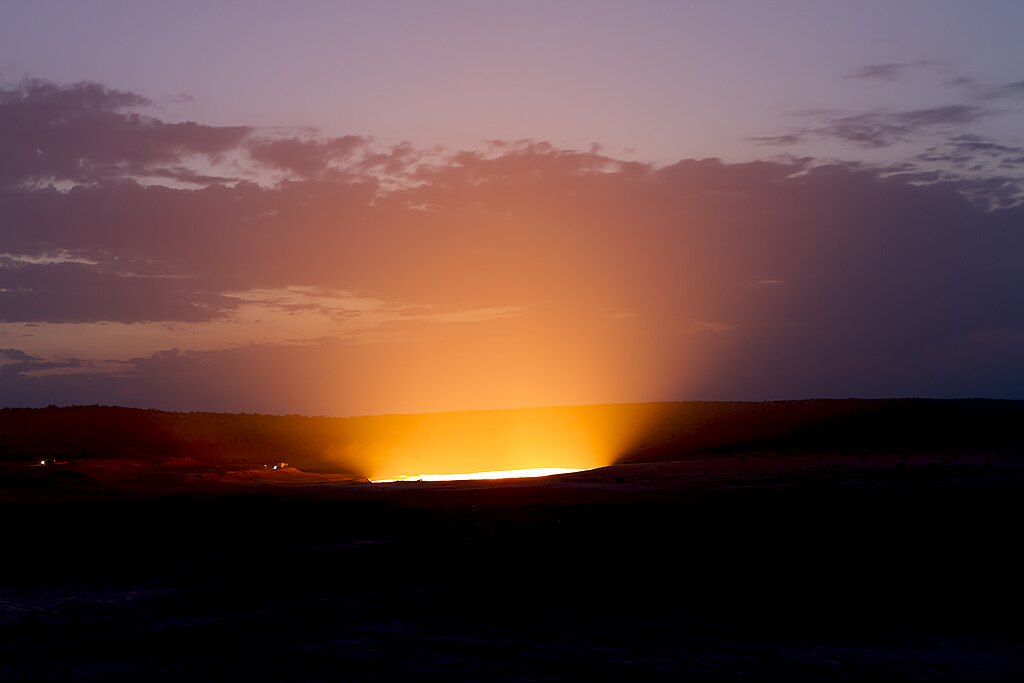
We tend to think of nature as orderly—seasons change, rivers flow downhill, and animals act the way they’re “supposed” to. But then there are places where nature just does whatever it wants. Gravity? Optional. Physics? Questionable. Biology? Apparently flexible. These are the spots that leave even scientists scratching their heads, wondering how anything makes sense. Here are 10 places where nature clearly decided to go off-script.
1. The boiling river of the Amazon, Peru
In the middle of the Peruvian rainforest, there’s a river so hot it can cook animals alive if they fall in. And it’s not near any volcano or geothermal hotspot, which is what makes it so weird. Temperatures hit nearly 100°C, and it steams like a natural kettle winding through the jungle.
Local legend sees the river as sacred, while scientists are still figuring out where the heat comes from. The most likely answer is a deep geothermal fault pumping heat into the water—but the fact that it exists at all is something of a geographical prank.
2. Magnetic Hill, Ladakh, India
There’s a stretch of road in northern India where cars appear to roll uphill. Park at the base, switch off the engine, and somehow you’ll start coasting forward—upwards. No push, no engine, just gravity doing the opposite of what it’s supposed to.
Turns out it’s an optical illusion caused by the surrounding landscape, but that doesn’t stop people from swearing it’s a magnetic force or some kind of anti-gravity field. Either way, it’s one of those rare places where your senses and the laws of physics aren’t on speaking terms.
3. The blood falls of Antarctica
In a place known mostly for being frozen and white, one glacier bleeds bright red. Blood Falls looks like something out of a horror film, with crimson water seeping from the Taylor Glacier into Lake Bonney. But the colour isn’t from blood—it’s iron oxide, basically rusty water escaping from a subglacial lake.
What’s stranger is that this water’s been trapped under the glacier for millions of years, untouched by air or sunlight, and still supports microbial life. It’s like nature’s way of saying, “Don’t assume I need warmth or oxygen to get things going.”
4. The Door to Hell, Turkmenistan
In the middle of the Karakum Desert is a massive crater that’s been on fire since 1971. It started when Soviet scientists accidentally collapsed a natural gas cavern. To avoid releasing toxic gas, they set it on fire, expecting it to burn out in a few days. Five decades later, it’s still going.
The flames are constant, the heat intense, and the name completely earned. It’s become a wild tourist attraction, but also a reminder of how nature and human error can combine to make something unexpectedly permanent—and very, very hot.
5. The pink lakes of Australia and Senegal
From above, they look like someone Photoshopped a Barbie dreamland into real life. But lakes like Lake Hillier in Australia or Lake Retba in Senegal are naturally bright pink, sometimes bordering on bubblegum or fuchsia depending on the light.
The colour comes from salt-loving algae and bacteria that thrive in these hypersaline environments. They’re harmless to humans, surreal to look at, and totally break the “water is blue” rule that we’re all taught as kids.
6. Sailing stones of Death Valley, USA
Rocks shouldn’t move on their own. And yet, in a dry lakebed called Racetrack Playa, stones weighing hundreds of pounds leave long, winding trails behind them in the cracked mud—despite no one seeing them move.
It took scientists decades to figure it out: the right combo of ice, wind, and just enough moisture creates conditions that let the stones glide across the ground. Still, the idea of a rock silently drifting overnight is nature at its most low-key spooky.
7. Bioluminescent bays, Puerto Rico
In certain coastal spots around Puerto Rico, the ocean glows blue when you touch it. Splash the water, and it lights up like magic. It’s caused by bioluminescent plankton called dinoflagellates, and they’re absolutely not following nature’s usual “stay invisible” rule.
These glowing waters can only happen in very specific conditions—warm, shallow bays with low circulation and just the right nutrients. The result is otherworldly, like swimming through liquid stars. You can’t bottle it, but you’ll never forget it.
8. Lake Natron, Tanzania
This lake is bright red, extremely salty, and hot enough to burn your skin. Oh, and it also has a reputation for preserving dead animals in a bizarrely mummified state, almost like nature’s taxidermy project.
The lake’s water has high levels of sodium carbonate and other minerals that create its harsh environment. Flamingos are one of the few animals that can handle it, nesting on its salty crust. Everyone else? They tend to stay away—or turn to stone-looking sculptures if they get too close.
9. Upside-down rivers in the ocean
In some parts of the ocean, there are underwater currents so strong and defined, they behave like rivers. They even carve “banks” and “valleys” into the seabed. The Black Sea, Gulf of Mexico, and some parts of the Atlantic all have them.
These underwater rivers don’t just move water—they move sand, nutrients, and even shipwrecks. It’s hard to wrap your head around: a river flowing through another body of water, following its own path like it doesn’t care what liquid it’s in.
10. The eternal lightning storm of Catatumbo, Venezuela
Over Lake Maracaibo in Venezuela, there’s a thunderstorm that never really stops. Lightning strikes around 260 nights a year, up to 10 hours a night, with thousands of flashes lighting up the sky like a strobe effect on loop.
Scientists believe it’s caused by a mix of warm winds, mountainous terrain, and the lake’s unique shape—but no one fully understands why it’s so relentless. It’s a natural light show on a scale you’d expect from special effects, not the sky itself.